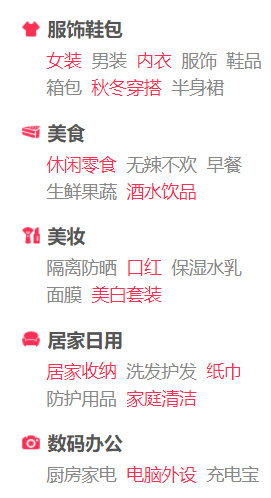原始 KB 号: 837388
本文描述了如何配置 Microsoft Outlook 以阻止 Outlook 不会默认阻止的附件文件名扩展名。如果您在 Microsoft Exchange 环境中使用 Outlook,可以通过使用 Outlook 电子邮件安全管理员包来配置服务器以阻止某些附件文件名扩展名。
此外,本文还包含如何根据不同的 Outlook 配置(有 Exchange 和无 Exchange)自定义安全设置的信息。
如何自定义安全设置以阻止其他附件文件名扩展名
以下方法描述了如何为不同的 Outlook 配置(有 Exchange 和没有 Exchange)自定义安全设置。
如何在 Exchange 环境中使用 Outlook Security Administrator Package 阻止附件文件名扩展名
如果您有一个使用Outlook安全管理员包的Exchange环境,并且您希望在Outlook配置中阻止更多附件文件名扩展名,您可以将更多的附件文件名扩展名添加到级别1文件列表中。要完成此操作,请按照以下步骤进行:
使用具有更改Outlook安全表单权限的帐户启动Outlook,并且该帐户在Outlook 10安全设置的公共文件夹中。
在文件夹列表窗格中,找到特定版本的Outlook安全设置公共文件夹。
双击默认安全表单。
在 杂项附件设置下,清除 显示1级附件 复选框。
在 级别 1 文件扩展名下,您可以在 添加框中输入要阻止的附件文件名扩展名。
如果您想在添加框中添加更多的附件文件名扩展名,您可以使用分号分隔它们。例如,如果您想阻止 .zip 和 .gif 的附件文件名扩展名,请输入 .zip; .gif
选择关闭,然后选择是以保存您的更改。
对每个您希望添加更多附件文件名扩展名的安全组,在公共文件夹中重复这些步骤以处理每个Outlook安全表单。
下次您的用户启动Outlook时,新的设置将被应用。
备注
如果您在步骤4中选中了显示级别1文件附件复选框,允许所有级别1附件文件名扩展类型在电子邮件消息中作为附件出现,则必须通过以下额外步骤添加您不希望在电子邮件消息中作为附件出现的附件文件名扩展类型:
在 级别1文件扩展名下,找到 移除框。在 移除框中,输入您不希望在电子邮件消息中作为附件出现的附件文件名扩展名。
如果您想在添加框中添加更多的附件文件名扩展名,您可以使用分号分隔它们。例如,如果您想阻止 .zip 和 .gif 的附件文件名扩展名,请输入 .zip; .gif
如何在非Exchange环境中阻止附件
重要
本节、方法或任务包含步骤,告诉您如何修改注册表。但是,如果修改注册表不正确,可能会出现严重问题。因此,请确保仔细遵循这些步骤。为了增加保护,修改注册表之前请备份注册表。如果出现故障,您可以恢复注册表。有关如何备份和恢复注册表的详细信息,请参阅如何在 Windows 中备份和恢复注册表。
如果您在非 Exchange 环境中运行 Outlook,并且希望阻止 Outlook 已阻止的附件文件名扩展名之外的更多扩展名,请使用本节中的信息。
Outlook 使用 Level1Add 注册表键来允许您添加您希望阻止的附加附件文件名扩展类型。
要添加您希望阻止的附加附件文件名扩展类型,必须向注册表中添加Level1Add键。要执行此操作,请按照以下步骤进行:
选择 开始,选择 运行,输入 regedit,然后选择 确定。
定位并选择注册表中的以下键:
HKEY_CURRENT_USER\Software\Microsoft\Office\16.0\Outlook\Security在编辑菜单上,指向新建,然后选择字符串值。
输入 级别1添加,然后按回车。
在 编辑 菜单中,选择 修改。
输入 <文件名扩展名>,然后选择 确定。
备注
file_name_extensions 是一个附件文件名扩展名的列表。每个附件文件名扩展名之间用分号分隔。例如,如果您想阻止 .zip 和 .gif 文件作为附件出现在电子邮件中,可以输入 .zip; .gif。
How to configure Outlook to block additional attachment file name extensions
Original KB number: 837388
This article describes how to configure Microsoft Outlook to block attachment file name extensions that Outlook doesn't block by default. If you use Outlook in a Microsoft Exchange environment, you can configure the server to block certain attachment file name extensions by using the Outlook E-mail Security Administrator Package.
Additionally, this article includes information about how to customize your security settings for different Outlook configurations with and without Exchange.
How to customize your security settings to block additional attachment file name extensions
The following methods describe how to customize your security settings for different Outlook configurations with and without Exchange.
How to block attachment file name extensions in an Exchange environment with the Outlook Security Administrator Package
If you have an Exchange environment that uses the Outlook Security Administrator Package and you want to add more attachment file name extensions that you want to block in your Outlook configuration, you can add more attachment file name extensions to the Level 1 file list. To do this, follow these steps:
Start Outlook with an account that has permissions to change the Outlook Security Form in the Outlook 10 Security Settings public folder.
In the folder list pane, locate the version-specific Outlook Security Settings public folder.
Double-click Default Security Form.
Under Miscellaneous Attachment Settings, clear the Show level 1 attachments check box.
Under Level 1 File Extensions, type the attachment file name extensions that you want to block in the Add box.
If you want to add more attachment file name extensions in the Add box, you can separate them with a semicolon. For example, if you want to block both the .zip and the .gif attachment file name extensions, type .zip; .gif
Select Close, and then select Yes to save your changes.
Repeat these steps for each Outlook Security Form that you have in the public folder for each security group that you want to add more attachment file name extensions to.
The next time that your users start Outlook, the new settings will be applied.
备注
If you the Show Level 1 File Attachments check box from step 4 was already selected to allow all Level 1 attachment file name extensions types to appear in the e-mail message as an attachment, you must add the attachment file name extensions that you don't want to appear in the e-mail message as an attachment by following this one additional step:
Under Level 1 File Extensions, locate the Remove box. In the Remove box, type the attachment file name extensions that you don't want to appear in the e-mail message as an attachment.
If you want to add more attachment file name extensions in the Add box, you can separate them with a semicolon. For example, if you want to block both the .zip and the .gif attachment file name extensions, type .zip; .gif
How to block attachments in a non-Exchange environment
重要
This section, method, or task contains steps that tell you how to modify the registry. However, serious problems might occur if you modify the registry incorrectly. Therefore, make sure that you follow these steps carefully. For added protection, back up the registry before you modify it. Then, you can restore the registry if a problem occurs. For more information about how to back up and restore the registry, see How to back up and restore the registry in Windows.
Use the information that is in this section if you're running Outlook in a non-Exchange environment and you want to block more attachment file name extensions than those that Outlook already blocks.
Outlook uses the Level1Add registry key to permit you to add additional attachment file name extensions types that you want to block.
To add additional attachment file name extensions types that you want to block, you must add the Level1Add key to the registry. To do this, follow these steps:
Select Start, select Run, type regedit, and then select OK.
Locate and then select the following key in the registry:
HKEY_CURRENT_USER\Software\Microsoft\Office\16.0\Outlook\SecurityOn the Edit menu, point to New, and then select String Value.
Type Level1Add, and then press Enter.
On the Edit menu, select Modify.
Type <file_name_extensions>, and then select OK.
备注
file_name_extensions is a list of the attachment file name extensions. Each attachment file name extension is separated by a semicolon. For example, type .zip; .gif if you want to block both .zip and .gif files from appearing in the e-mail message as an attachment.
推荐本站淘宝优惠价购买喜欢的宝贝:
本文链接:https://hqyman.cn/post/11363.html 非本站原创文章欢迎转载,原创文章需保留本站地址!
休息一下~~



 微信支付宝扫一扫,打赏作者吧~
微信支付宝扫一扫,打赏作者吧~